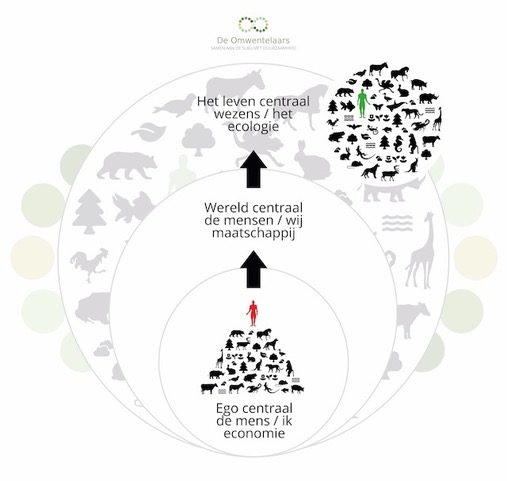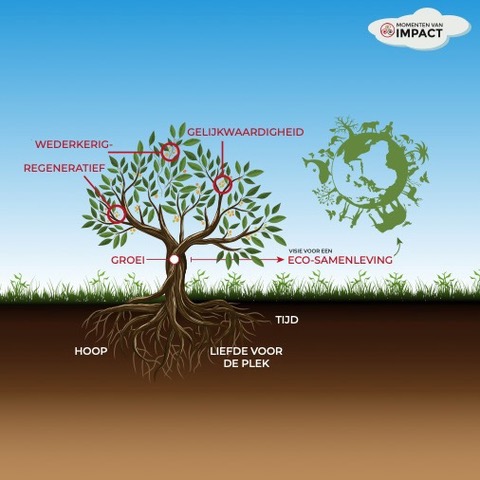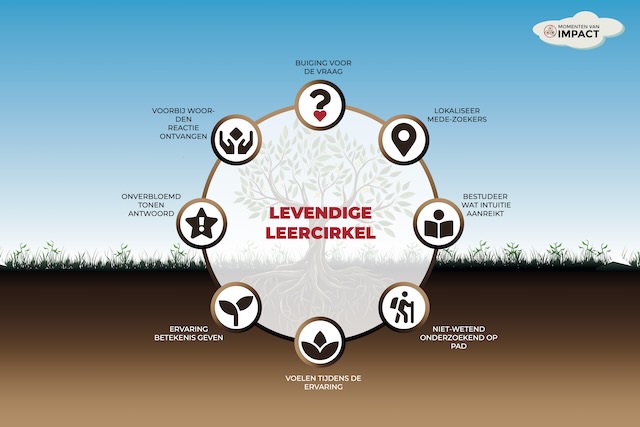
The transition to a circular economy requires more than technical solutions. We need to change our perspective towards the world we live on. That is easier said than done. Ilse Meelberghs, practitioner of applied ecopsychology, helps people in their quest to live more sustainably and ecologically. She shines her light on what is important to us and the role of behavioural change. The end goal: the eco-society. We cannot wait to learn more from her.
Ilse helps people looking for their place in an eco-society. She is an expert by experience, as she herself has been looking for a long time. ‘I graduated as a business economist. I then worked in business for 15 years. It became increasingly difficult to reconcile that role with sustainability.’ In the 15 years that followed, she searched for the missing puzzle pieces. She did so from different positions, like that of the innovative college teacher. She ended up finding the missing pieces in a different worldview, including a different relationship with nature and a new perspective on economics.
For Ilse, and society, change does not happen by itself. ‘We need to walk two paths to make the transition. We need tools, like Cirmar’s. In addition, we as individuals ideally start to feel what we are doing it for, to then break patterns in our behaviour.’ For some, it is logical and urgent that we learn to treat the earth and its resources better. Others do not see this yet. If we really understand what we are doing it for, the urgency and the search for our own role in this process will naturally arise. Being sustainable means loving the earth so much that you are willing to change your behaviour and the tools you use.
For many people, it is us: humans. We have long had little to fear from other animals. That human-centered worldview needs expansion, says Ilse. ‘It is very simple. By sticking to this ‘pyramid’, we are wrecking ourselves and the rest of the earth as we know it.’

Whether and when this image is shaken, varies from person to person. ‘One person reads an article or sees a film or documentary that turns its world upside down. For another, it is the mountain of plastic waste at a holiday resort that gives the last push. For others, it happens once they reconnect with nature, with the ecosystem. They start to see that we are not in charge of the earth, but part of a larger ecosystem. It is time we start learning to behave accordingly.’
Once that point is reached, confusion often sets in. How do I proceed? The big picture is that we learn to live by natural principles again, one of which is circularity.
With her visual representations of what an eco-society can look like, Ilse helps oversee the path to positive change. ‘I want to show that life within an eco-society is fun! We don’t have to make concessions in that respect. It is, however, more complex to get there than we would like. How do you start making decisions where nature and future generations are considered alongside human interests?’
This means there is an important task to help citizens as well as companies and governments develop. In any case, Ilse continues with her mission: to create the widest possible platform for insights into the personal process in the transition to an eco-society.


Want to know more about Ilse and what she can do for you? Go to https://momentenvanimpact.nl/ (in Dutch), where you can find out more about what she does and you can start working on an eco-society right away. We are making the transition to a circular, more sustainable economy together. That is why at Cirmar, we put others in the spotlights who are working towards our common future.